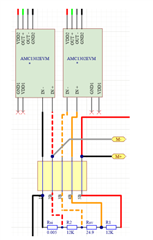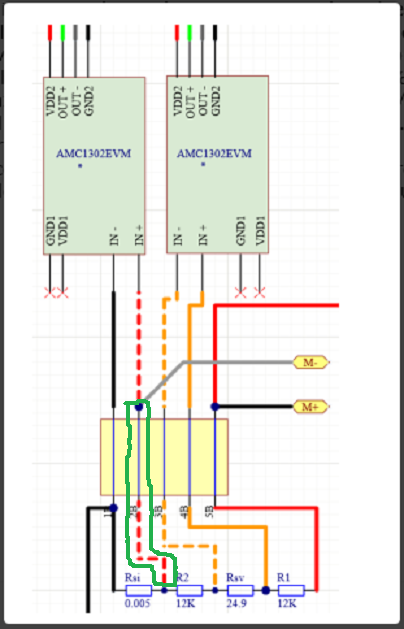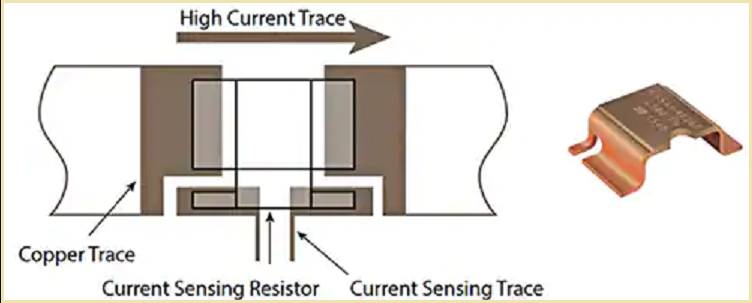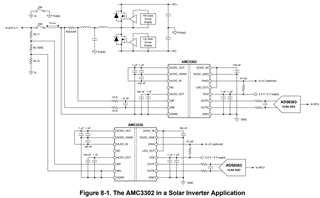Other Parts Discussed in Thread: AMC3330, AMC1302, AMC3302
I'm using two AMC1302EVMs to characterize a DC motor. One measures the motor voltage, and one measures the motor current. I have the outputs of the amps connected to differential inputs on a DAQ module, which computes the voltage and current measurements based on the particular resistor divider network I've been using. With this setup I've been having issues with the accuracy of my current measurements. When the motor is at full speed and drawing maximum current, the measurements have an 8% relative error to the actual current the motor is drawing (confirmed using a DMM). At 25% power, they have around a 30% relative error to the actual current being drawn. Going from 25% motor power to 100% and observing the measured and actual current values, there seems to be an exponential decay relative error relationship. I have a feeling the issue is with my shunt resistor, as the value I chose is 0.005ohms. With this resistor, I first ran into issues with my wires connecting the legs of the resistor to the EVM board, as the resistance of the wires was comparable to the resistance of the shunt, resulting in a scaled version of the actual voltage getting fed into the EVM. However, even after connecting the resistor legs directly into the EVM board with no added wires, I still see this 30% -> 8% relative error trend. I imagine re-sizing my shunt resistor might help, but since the maximum input voltage range to the EVM is +/- 50mV, and my motor draws around 3A at maximum speed, the largest resistor I could use and not exceed this range is around 0.017 ohms, which is within the same order of magnitude as my original shunt. I was wondering if TI had any recommendations for how to set up a resistor divider network with a larger shunt resistor that would result in more accurate current measurements, or if there are other ways to mitigate this issue, perhaps on the EVM itself. My EVM setup diagram is included below, with Rsi being my shunt resistor used for current measurement, and M+ and M- being my motor terminals.





